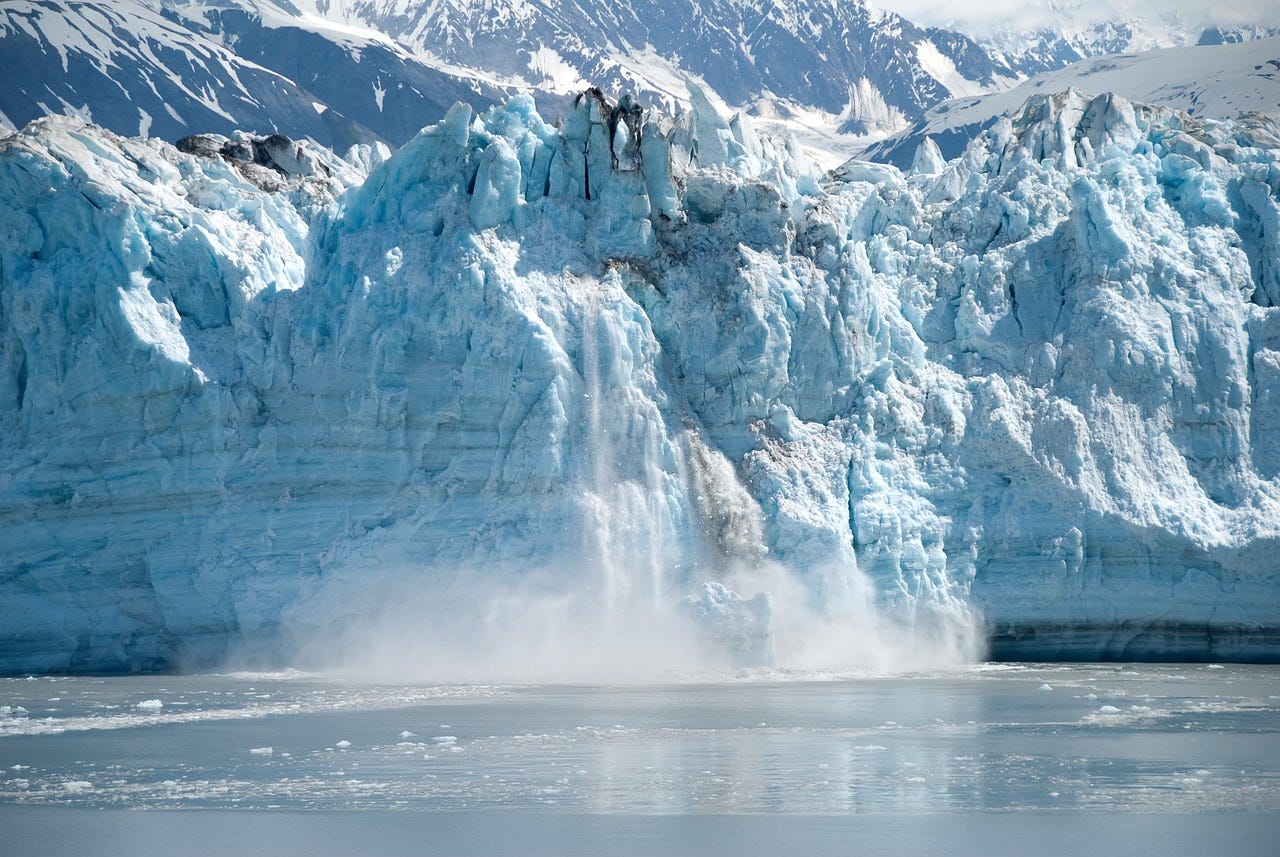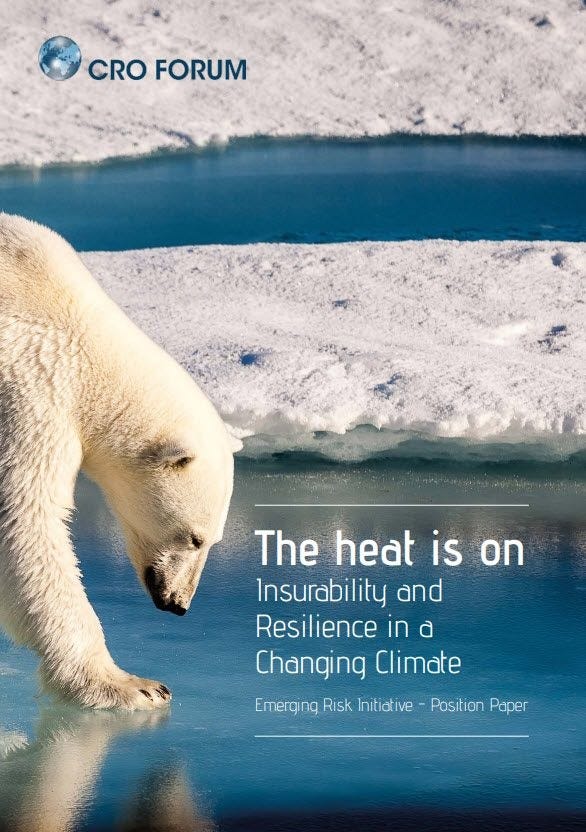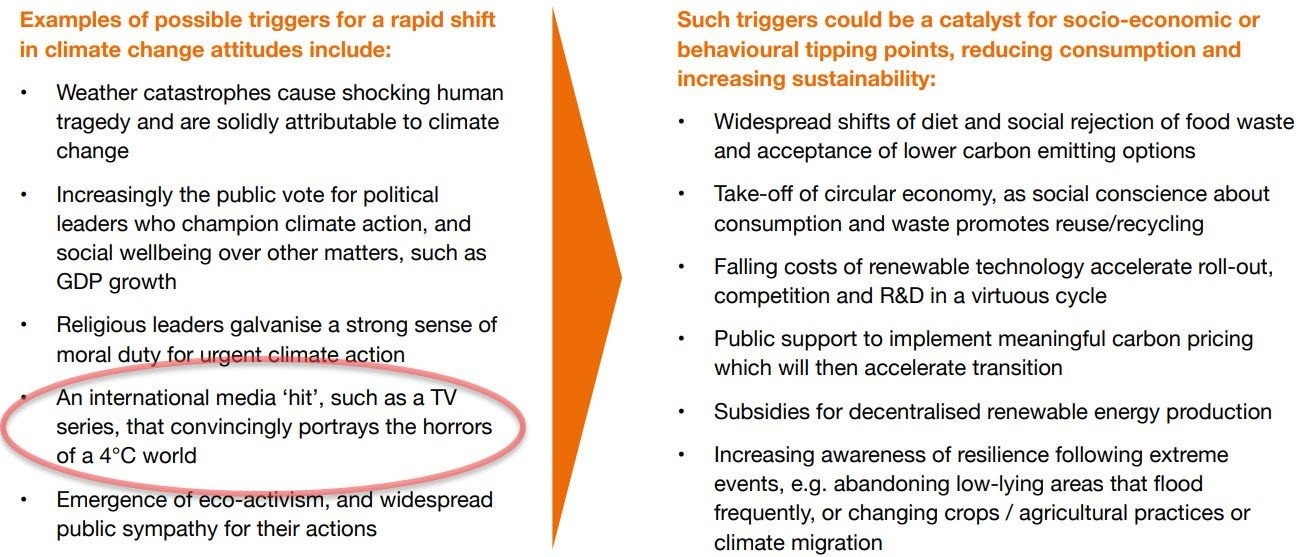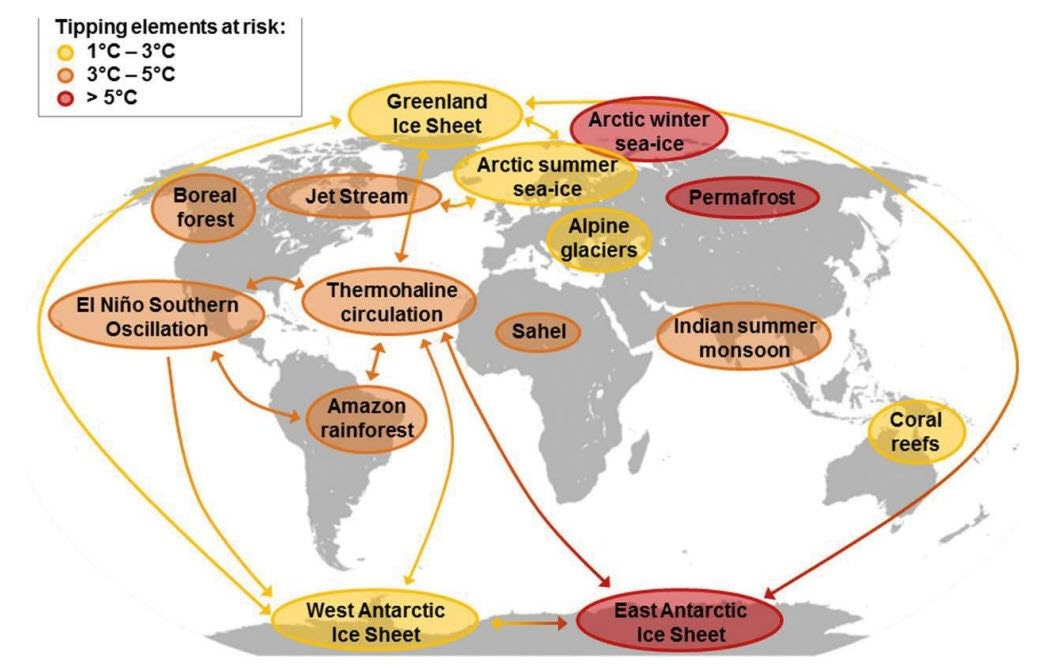The tipping point we can choose - before the choice is made for us
A while back I got to interview Kim Stanley Robinson.
Robinson is a bestselling science fiction writer - who’s really become even more famous in recent years as a “cli-fi” writer. Climate fiction are stories that look into a future impacted by the climate crisis.
What Robinson writes is fascinating and frightening - but also hopeful. Beyond catastrophes he also shows that - and how - humanity can rise to the many challenges. For our interview, focused on his epic novel Ministry for the Future - but I’ve read a few others as well. In his New York 2140, the world has been flooded after ice sheet tipping points massively elevated ocean levels. The setting is New York where much of it remains submerged (as are all other big, shore-based cities around the world). In the novel, it’s fascinating to see how humanity deals with the floods, how new solutions are found, how people find new ways to live and work and govern - and how some things don’t change at all.
Back to Ministry for the Future: In this novel, Robinson basically tells the story of humanity’s fight to combat the climate crisis. The whole book is epic in scope and feels like a lot more science than fiction, even it if is set slightly in the future (starting in 2025 and continuing into the following decades). This book just might need to become mandatory reading - not because it shows us a rosy picture of the future - but because it shows us what is, what will happen, and what it takes for the global community to rise to the challenge.
Like you, I’ve heard and read a great deal about climate change, about the climate crisis - and about what is committed to and what does and does not actually happen - so far, despite the many good actions and intentions, we’re falling woefully short - we are still failing our future generations. That is exactly what the “Ministry for the Future” is for. Robinson’s imagined ministry is an organization called into life by the 2015 Paris Agreement to be the voice of and fight for future generations, for those who cannot fight for themselves, but who should definitely also have a voice.
In this novel, you’re given the point of view of many different sides - and one after another, whether it is deadly heatwaves in India, or hopeful efforts in Antarctica, or central banks and the carbon coin, or the hard work toward the Half Earth, the power of ecoterrorists, the future of sail-powered container ships and modern airships, etc., etc., you’ll not only learn more, you’ll not only grasp the incredible and continuous efforts it will take - but you’ll also see what can be, what can become, that all of it, impossible as it may seem sometimes, can happen.
Like I said, a powerful tale - because after all the bumps and hurdles and hardships, it shows us a future that can become, a future for ourselves and our future generations, a future we will want to live in. I thought I’d add something more here - as it very much pertains to the above mentioned tipping points. Years back I read The heat is on - insurability and resilience in a changing climate, a publication by the Chief Risk Officer’s Forum.
Here’s the direct link to the publication (published in January 2019) - an excellent and worrisome read. The intro: “The science behind global warming and the role of greenhouse gases is clear. However, the future is difficult to predict given the wide range of potential outcomes associated with the many variables and varying emissions pathways. At the more extreme end the consequences are potentially huge, with society likely to face transformational change across all scenarios. This makes climate change risk unusually broad in nature and one many regard as the greatest facing humanity.” In chapter 2, the report shows you we can expect in a world that
remains under 2°C (Paris targets met – steep transition);
goes +3°C (more severe physical impacts); and
goes +5°C scenario (physically devastating).
"Physically devastating" - their words, not mine. But that’s not actually what I wanted to focus on here. I read that report and came across something that I found to be the most troubling of everything presented in the publication. It was about us, humanity, it was about our nature and what it might take for us to go from moderate and passive interest to forceful and sustained action. That report states: “Failure to act now has repercussions for the whole of society. Ultimately the key to resilience is to limit future warming by reducing emissions and adapting.” Here’s what I found particularly telling about us (humanity):
The report, on page 34, talks about socio-economic tipping points that need to happen because “deep and extensive social, behavioral and economic change is needed to meet the Paris target. This requires a major social shift.”
We are where we are in time, with the climate crisis clear for all to see by now. Refusal to see doesn’t necessarily mean that people are belligerent or ignorant - for many the climate crisis is still simply perceived as not relevant to their daily lives. And so the authors of the CRO report highlight the above as possible triggers that might, on a large scale, shift humanity’s attitude toward climate change. Weather catastrophes, as mentioned above, are front and center in Robinson’s Ministry for the Future - and, more and more, I think that this is the most likely scenario for humanity to change course. It will be, literally, earth-shattering, an event of lasting global impact as a WWII, or the 9-11 attacks. Robinson’s work shows that humanity is incredibly ingenious - but that, time and time again, the humanity acceptance and shift to new ways doesn’t happen until after one of Earth’s physical tipping points goes (see page 11 of the report for the various tipping points).
“Tipping points are so dangerous because if you pass them, the climate is out of humanity’s control: if an ice-sheet disintegrates and starts to slide into the ocean, there’s nothing we can do about that.” (Dr James Hansen, Climate Science, Awareness and Solutions Program, Earth Institute, Columbia University)
Does it really have to come to that? Do we really have to see millions of people around the world die and/or lose their livelihoods, before humanity comes together with everything that's needed? The above-pictured scenario of a TV hit? A “Game of Thrones” type phenomena that brings the world into a different worldview? Heck, it’s unlikely, at best - but it is possible. As I recall a futurist saying, “We have the power to create the future by telling the stories of the future we want to live in.” We can do this - and it will be because of either a tipping point we choose or one that is eventually hurled at us because of our inaction. It may still be up to us - but we’re already dangerously close to climate-fiction as envisioned by Kim Stanley Robinson becoming our reality.
For me personally, I've long "tipped," so to speak. And many of us at Swiss Re have done so, too, with our many efforts both at work and in our individual lives. People like Kim Stanley Robinson reach many with their bestselling novels - they make a huge difference in the way they illuminate and activate by the sheer power of storytelling. But we, too, have power. Our spheres of influence are smaller, sure, but within those spheres we can also illuminate and activate so that, hopefully, we become part of a global force that chooses a human tipping point - the ones shown below are there, and they are very, very real. We can keep them there, it is, it still is, up to us.
When you look at the above image, you’ll see that, for example, it won’t take much more for the Greenland ice sheet to tip. According to Wikipedia it is the second largest ice sheet in the world. Completely melted, it would raise sea levels globally by 7.2 meters. It would have devastating effects for humanity and its countless endeavors along ocean shores. Now, according to this Guardian article, we’re already on the brink of several tipping points ... what exactly are we waiting for?








